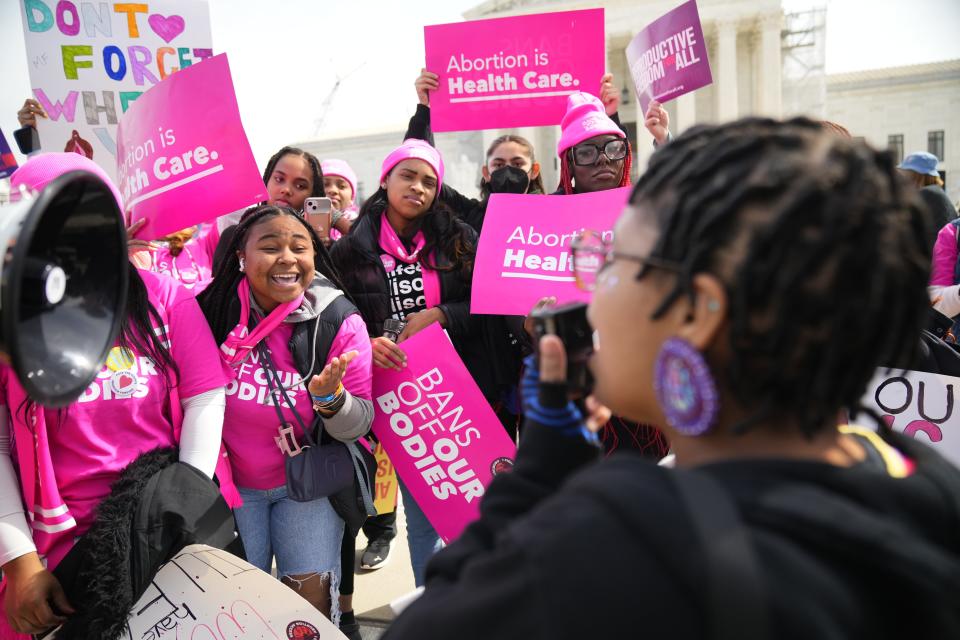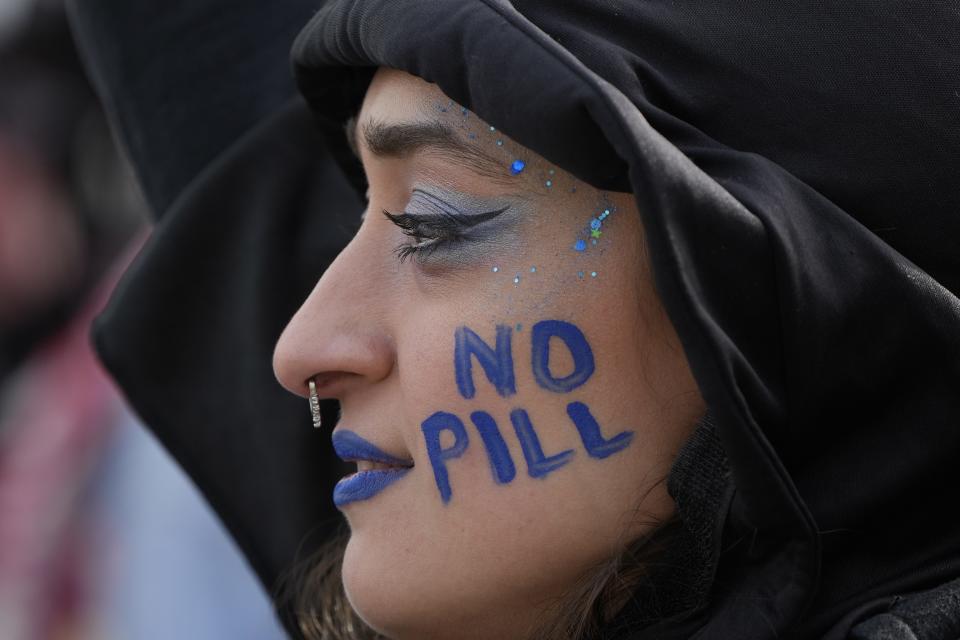Supreme Court arguments on abortion pill could unify judges
- Oops!Something went wrong.Please try again later.
- Oops!Something went wrong.Please try again later.
A Supreme Court bitterly divided two years ago over the right to an abortion appeared to find something close to unity Tuesday as conservative and liberal justices took turns picking apart the arguments of a small group of anti-abortion doctors seeking to roll back access to the widely used abortion drug mifepristone.
If lawyers for the group expected kid gloves from the court’s conservative wing, they may have left Tuesday’s arguments feeling bruised.
For example, Justice Neil Gorsuch, a Donald Trump appointee who voted in 2022 to overturn the 1973 ruling that made abortion legal nationwide, groused that “a handful of individuals” were trying to make health policy for the entire country.
The case, Gorsuch said, “seems like a prime example of turning what could be a small lawsuit into a nationwide legislative assembly on an FDA rule or any other federal government action.”

Related: Supreme Court rejects appeal from parents who lost custody of trans teen
Shock waves through the medical and legal worlds
Tuesday’s arguments were a big speed bump for a crucial abortion case that had so far sailed through lower courts with key arguments intact.
The case sent shock waves across the medical and legal worlds last year when a Trump-appointed district judge in Amarillo, Texas, suspended the FDA’s 20-year-old approval of mifepristone. The right-leaning 5th Circuit Court of Appeals in Louisiana restored the FDA's approval but upheld other parts of his decision – setting the stage for a high court showdown that saw strident anti-abortion and abortion rights protesters facing off on the streets outside.
The hearing generated intense interest in part because the doctors have sought to use the Comstock Act, a 19th-century anti-obscenity law, to ban the delivery of mifepristone by mail. But, with the exception of Justices Clarence Thomas and Samuel Alito, the court mostly ignored the 1873 law and focused on the anti-abortion doctors.
More: How the Supreme Court case on the abortion drug mifepristone could affect 2024 election
The Supreme Court has experienced strong divisions over recent cases involving issues including abortion, affirmative action and gun rights.
But there were moments Tuesday when the justices seemed to line up to get in their own skeptical questions about the doctors’ standing to sue, the broad restrictions they demanded, and whether the FDA's decisions can be second-guessed by the judiciary.

Justice Ketanji Brown Jackson pressed Erin Hawley, the doctors’ attorney, to provide an example of an anti-abortion physician who had been forced to violate their ethics by treating a woman suffering from a mifepristone-related emergency.
Hawley replied that she couldn’t because “doctors don't necessarily know until they scrub into that operating room whether this may or may not be abortion drug harm. It could be a miscarriage, it could be an ectopic pregnancy, or it could be an elective abortion.”
More: What does the mifepristone case mean for Plan B? The difference between the two explained.
Solicitor General Elizabeth Prelogar had earlier told the court the doctors’ argument was “unduly speculative.”
“We think that that situation has never come to pass,” she said. The doctors “haven't identified any incident in more than 20 years that mifepristone has been available on the market that resembles that kind of hypothetical situation.”
Justice Clarence Thomas, who voted last year to roll back the drug's availability while Tuesday's case was being litigated, went after the doctors’ claim that the very fact that they felt compelled to sue counted as an injury requiring the court’s intervention.
More: Abortion pill challenge gives Supreme Court chance to move toward national abortion ban
“That would be anyone who is aggressive or vigilant about bringing lawsuits, just simply by using resources to advocate their position in court − you say now − causes an injury. That seems easily, easy to manufacture,” Thomas said.
Hawley, who is married to Sen. Josh Hawley, R-Mo., said this case was different because the doctors had analyzed studies and combed through FDA data.
“Is that it?” Justice Amy Coney Barrett later asked.
Avoiding tough calls
Cora True-Frost, a Syracuse University law professor, said that by tackling the apparent weaknesses in the doctors' standing to sue and the broad remedies they demanded, the court was avoiding the knottier question of whether the judiciary should have a say in science-based decisions like the approval of drugs by the FDA.
“For the court to engage the merits of those arguments, they would be substituting their judgment for those of the experts at the FDA,” True-Frost told USA TODAY. “Focusing on the threshold issue of standing is a classic judicial move to conserve court resources and avoid making cases the court would rather not make.”
The justices seemed most rankled by Hawley’s argument that the only way to safeguard the rights of the anti-abortion doctors was to restrict the use of mifepristone nationwide, where it is used in the majority of U.S. abortions.
"They're saying, ‘Because we object to having to be forced to participate in this procedure, we're seeking an order preventing anyone from having access to these drugs at all,’” Jackson said. “And, I guess I'm just trying to understand how they could possibly be entitled to that given the injury that they have alleged."
More: 'Cancel culture': Supreme Court rejects case on dust-up between Catholic student and Native American
Chief Justice John Roberts asked why the case couldn’t be limited to the people involved in one region rather than blocking the FDA from allowing the drug everywhere.
“I think it might be impracticable,” Hawley said, because the FDA regulation would remain in place “and permit things like mail-order abortions.”
Gorsuch said there were zero nationwide injunctions during the 12 years of Franklin Delano Roosevelt’s administration – compared with 60 in the past four years.
“They’re a relatively new thing,” Gorsuch said. “You’re asking us to extend and pursue this relatively new remedial course, which this court has never adopted itself. Lower courts have kind of run with this.”
This article originally appeared on USA TODAY: In mifepristone abortion pill case Supreme Court judges seem skeptical

